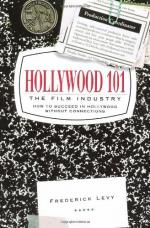|
This section contains 501 words (approx. 2 pages at 300 words per page) |

|
The Jazz Singer (1927) is a landmark motion picture: Its immense popularity as a sound film ushered in the talking motion picture. Prior to the film's release, the actors were in silent movies (see entry under 1900s—Film and Theater in volume 1); they performed pantomime-style. When these silent films were shown to audiences, live musical accompaniment provided background sound. With the newly developed ability to synchronize sound with image, movies began to be released with synchronized music and sound effects. The smashing success of The Jazz Singer—which included a talking scene with several song numbers and a synchronized musical track—encouraged major film studios to convert their production facilities to sound stages. Theaters converted their projection equipment to accommodate sound. By 1928, it was clear that movies would no longer be silent.
The Jazz Singer, directed by Alan Crosland (1894–1936), was based on a short story...
|
This section contains 501 words (approx. 2 pages at 300 words per page) |

|




